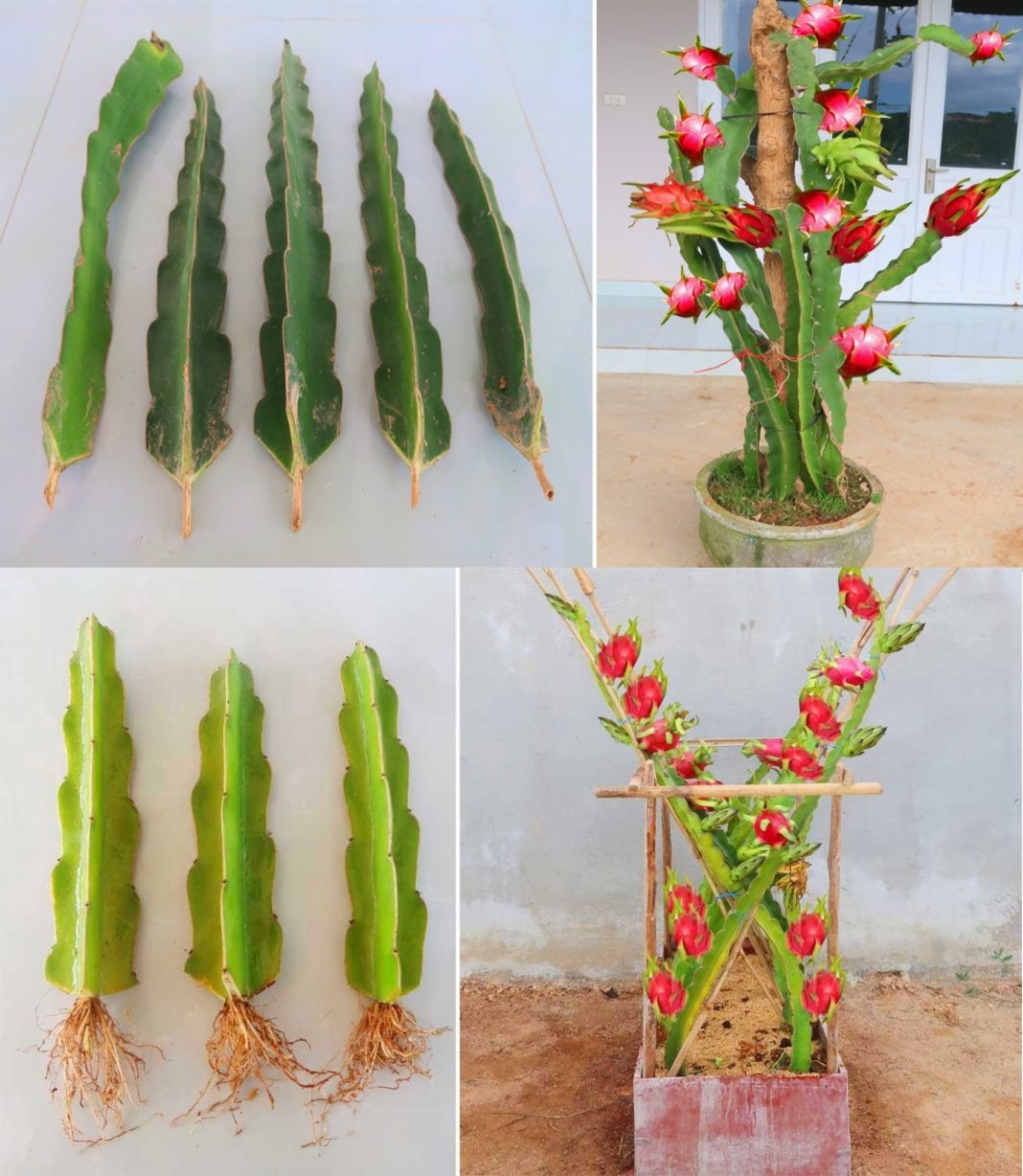Propagating Dragon Fruit From Cuttings
Dragon fruit, or pitaya, is a cactus fruit that tastes delicious, is nutritious, and grows well in warm-winter climates (it doesn’t like temperatures below 40° F). We’ve wanted to grow it for years, but haven’t had room to trellis it up a wall, because it requires support. The other day while walking past a meandering dragon fruit plant, however, we couldn’t resist taking a cutting or two.
Dragon fruit, like many cacti, is easy to propagate. Simply trim the end and plop it in soil. But there are a few specifics to note along the way. Here’s the breakdown.

Trim the Ends
Dragon fruit grows in segments, so it’s easy to take a cutting at one of the narrow points along a segment. But new roots don’t grow well from the narrow, woody end. Cut the end off to create more surface area along the tender part of the plant.


Cut at least 1-2 inches off the bottom of each piece. Discard this part.
Prepare your Pots
While it’s well-known that cactus prefers “cactus mix” potting soil with plenty of sand, dragon fruit actually likes regular ol’ potting soil. You may want to add a little more sand or perelite to your mix, but any sandy loam potting soil will do.

Two of our cuttings were fairly long, longer than the advised size of 5-6 inches. We decided to leave them long to see how it worked. We trimmed two smaller segments that were on the short side (about 3″) as well (one of which had a root forming already). We’ll see which does best.
Potting the Dragon Fruit

Dig a hole in the middle of your pot and place the cutting 2 to 3 inches deep. Backfill the soil and compress it slightly to keep the cutting upright.
Water the Baby Dragon Fruit

Water enough to moisten the soil but not saturate it. Remember, these are cactus plants. They don’t need a lot of water.
Then What?
Place the cuttings in partial shade so they can take root without stress. It may take a few weeks for them to begin generating roots. Root growth is obvious when you start to see new top growth as well.
Once these develop roots, we’ll transplant them to larger pots next to a wall with a trellis…once we figure out where. Ah, the sign of a true Gardenerd–acquiring plants before you know where to put them!
We’ll post updates as they grow. Stay tuned.


